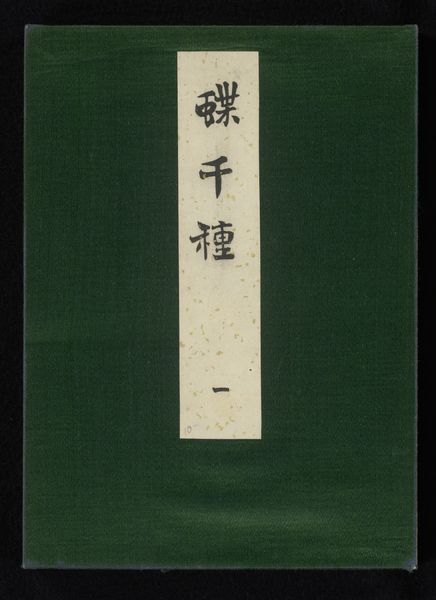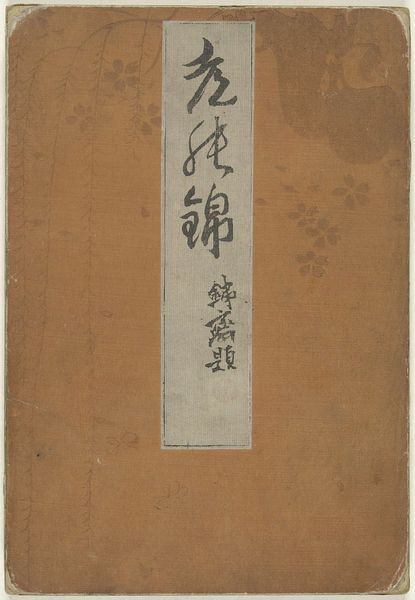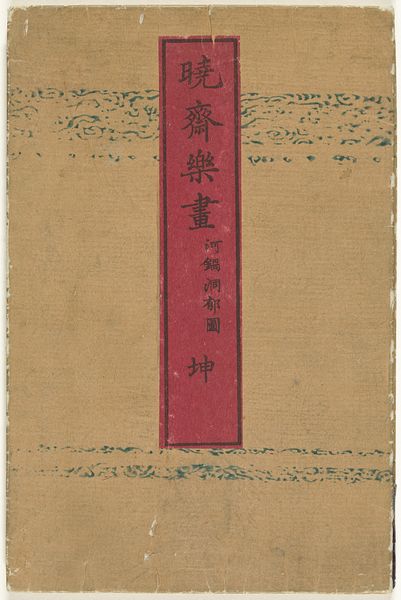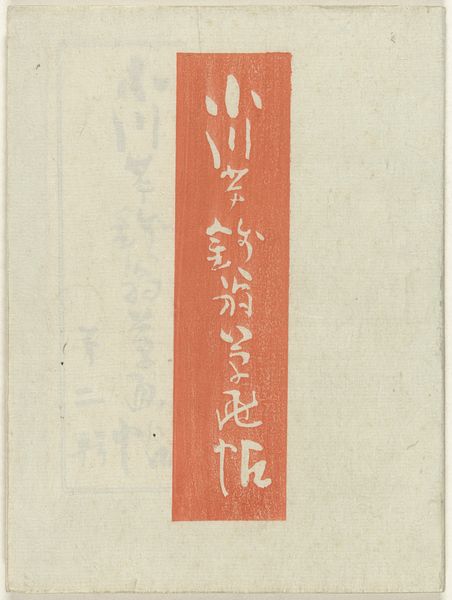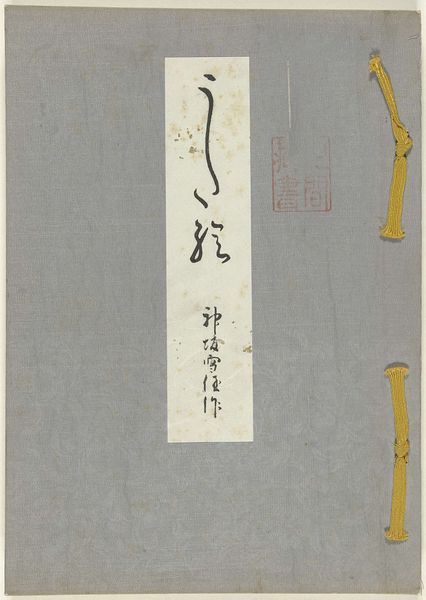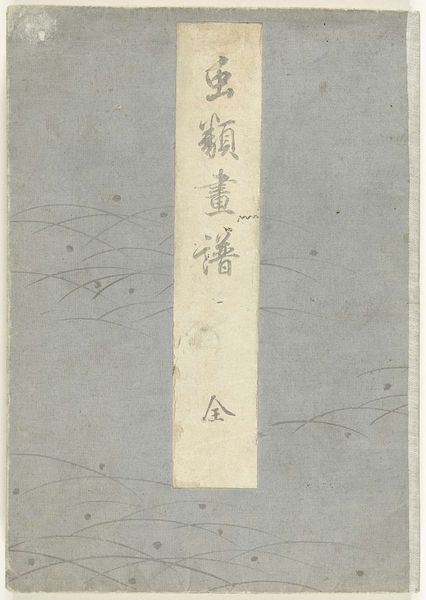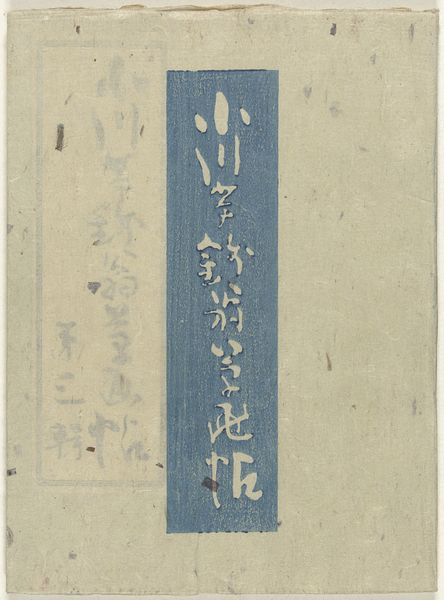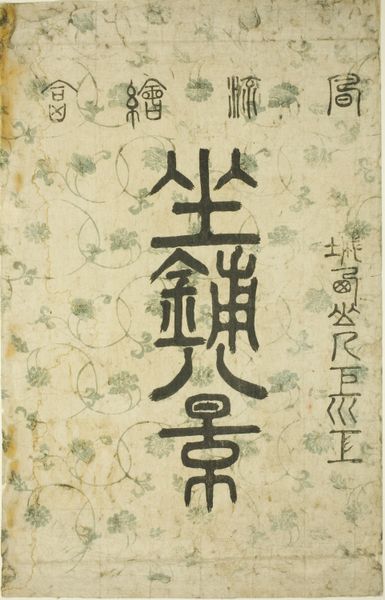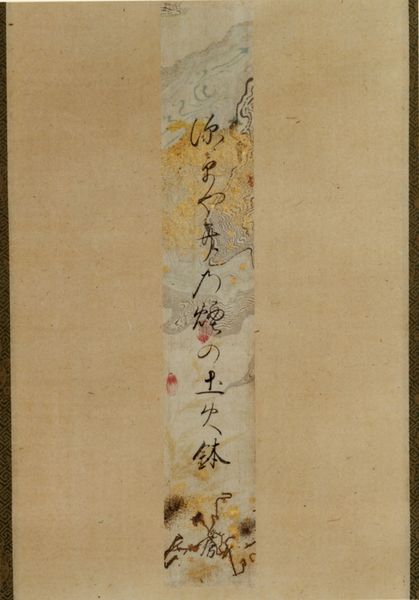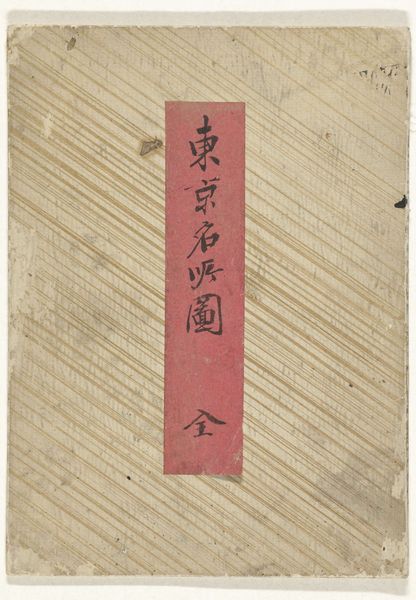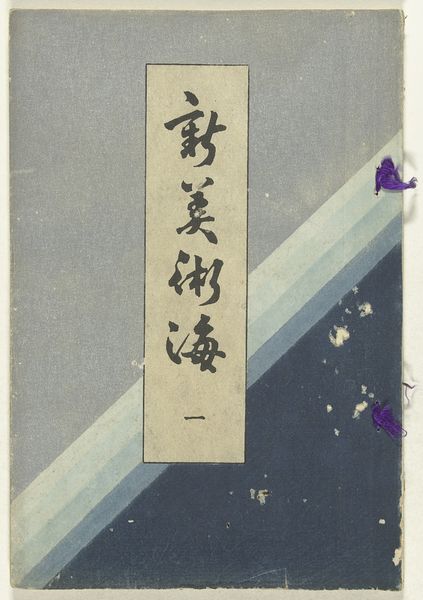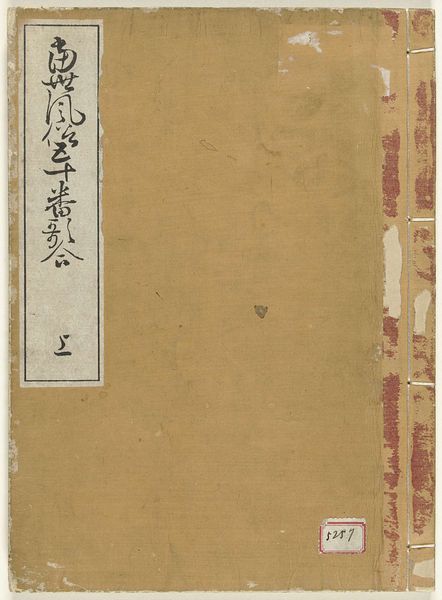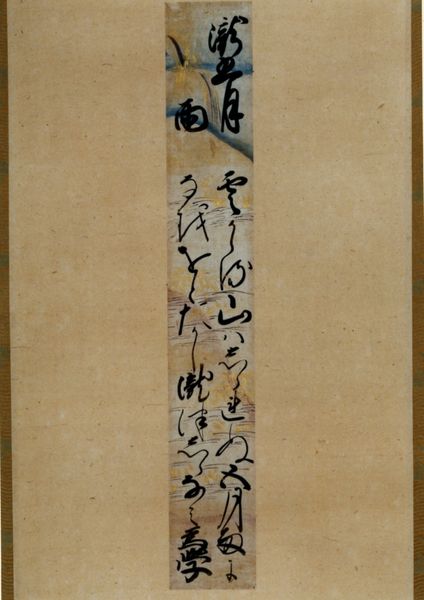
print, paper, typography, ink, woodblock-print
#
water colours
# print
#
asian-art
#
paper
#
typography
#
ink
#
woodblock-print
#
calligraphy
Dimensions: height 249 mm, width 179 mm
Copyright: Rijks Museum: Open Domain
Curator: Standing before us is "Een keur van duizend vlinders, deel één" by Kamisaka Sekka, crafted around 1908. It's a print, blending watercolors, ink, and typography on paper. Editor: Stark. Initially, the deep green contrasting with the off-white panel commands attention. The verticality is pronounced. It’s visually austere yet holds a peculiar balance. Curator: It's part of a larger series, evoking Japonisme, reflecting the West's fascination with Japanese aesthetics at the time. Sekka masterfully infuses traditional Japanese motifs into this design. Editor: Absolutely. Notice how the dark background almost engulfs the central rectangle. The artist’s use of geometric shapes—that crisp rectangle—combined with calligraphy directs the viewer’s eye upwards, compelling a sense of reverence. The texture in the background gives a hint of wood. Curator: The calligraphy isn’t merely decorative; it represents cultural memory. The title itself suggests a multitude, a rich variety of forms hinted at but not explicitly shown. Consider butterflies, symbols of transformation and fleeting beauty across cultures. It's like holding an ancient poem. Editor: True. I'm curious about that red seal at the bottom. Its circular shape offers the only relief from the linearity, almost like an assertion of the artist's individual identity against the backdrop of tradition. Curator: Seals like that were often used to denote ownership or authenticity. It’s a personal mark embedded within a more universal aesthetic. Perhaps reflecting the artist's hope to transform traditional imagery. Editor: In terms of semiotics, the interplay of text and visual space, the positive and negative forms, creates an interesting tension, a visual koan to contemplate. Curator: I’m drawn to think about how its quiet power resonated then, and still has meaning today as we look back. The work speaks of both restraint and a latent energy, promising a beauty that is hidden, suggested, rather than overtly displayed. Editor: Agreed. The formal economy gives the image a very modern feel, an enduring visual echo from another century that remains remarkably resonant.
Comments
No comments
Be the first to comment and join the conversation on the ultimate creative platform.
